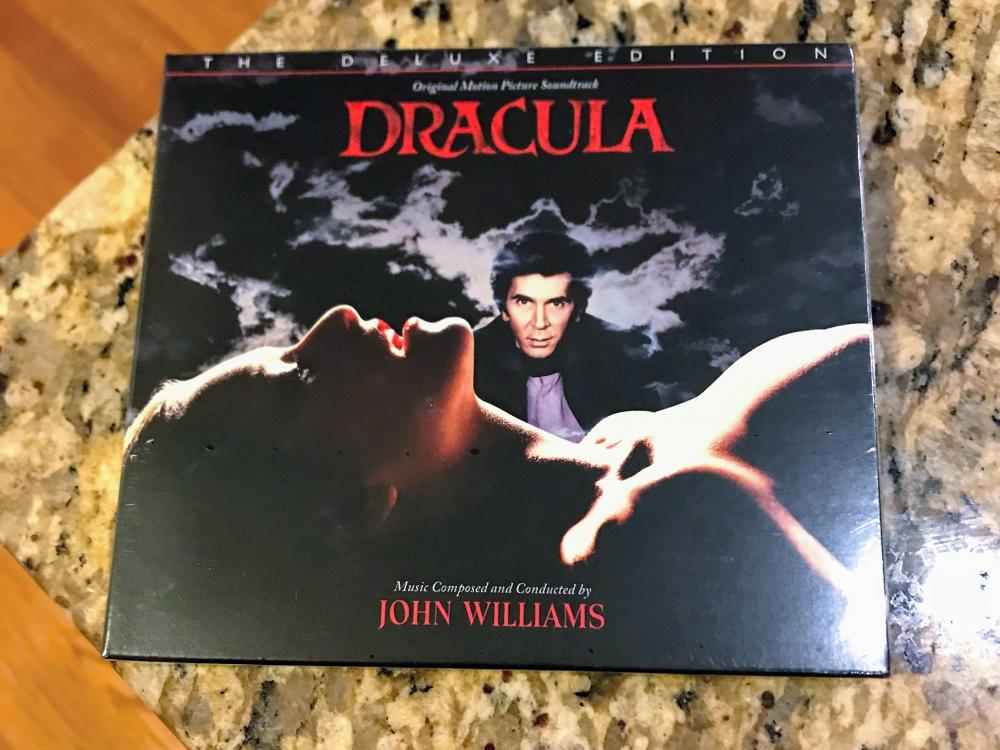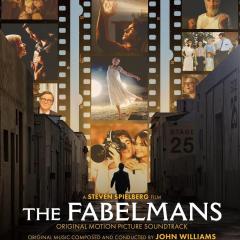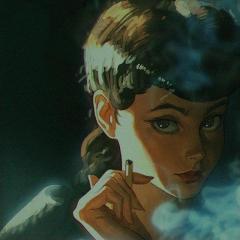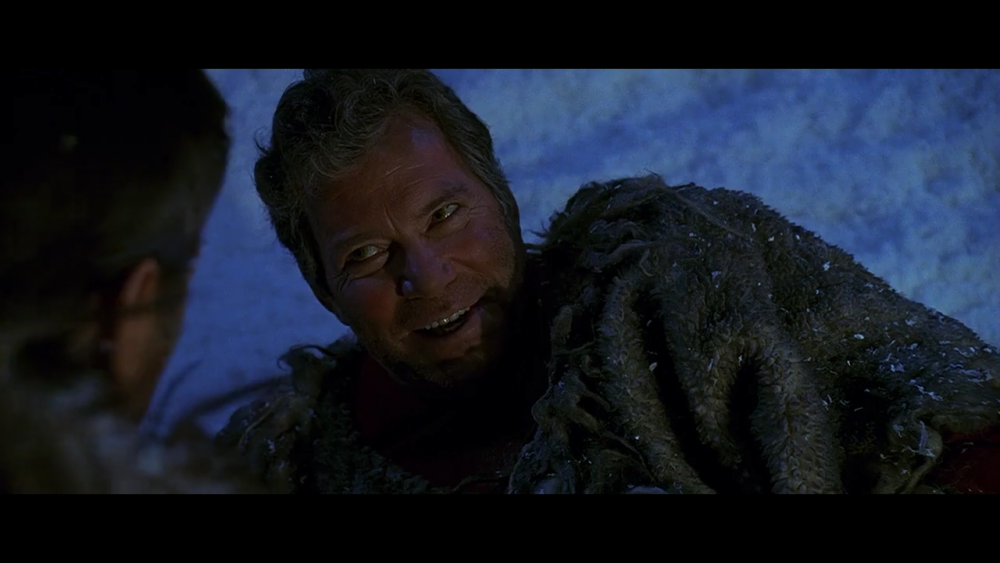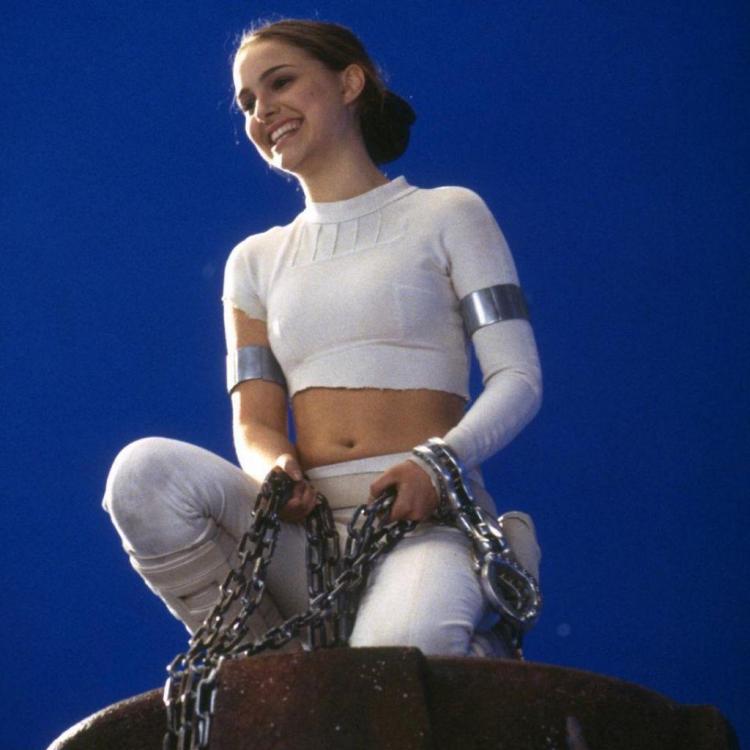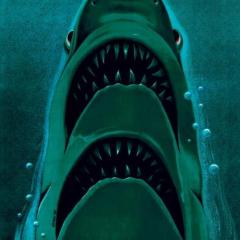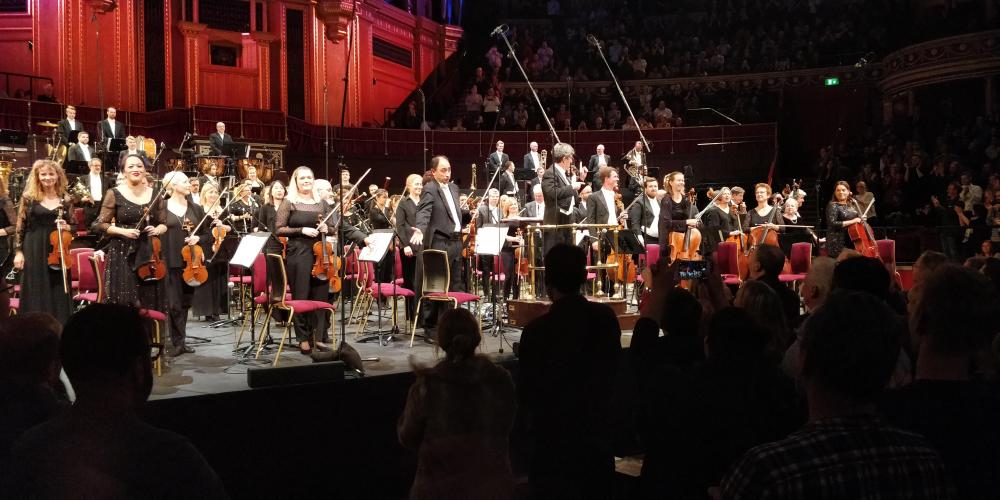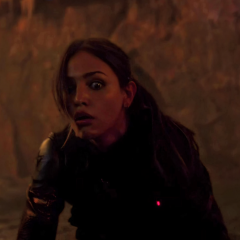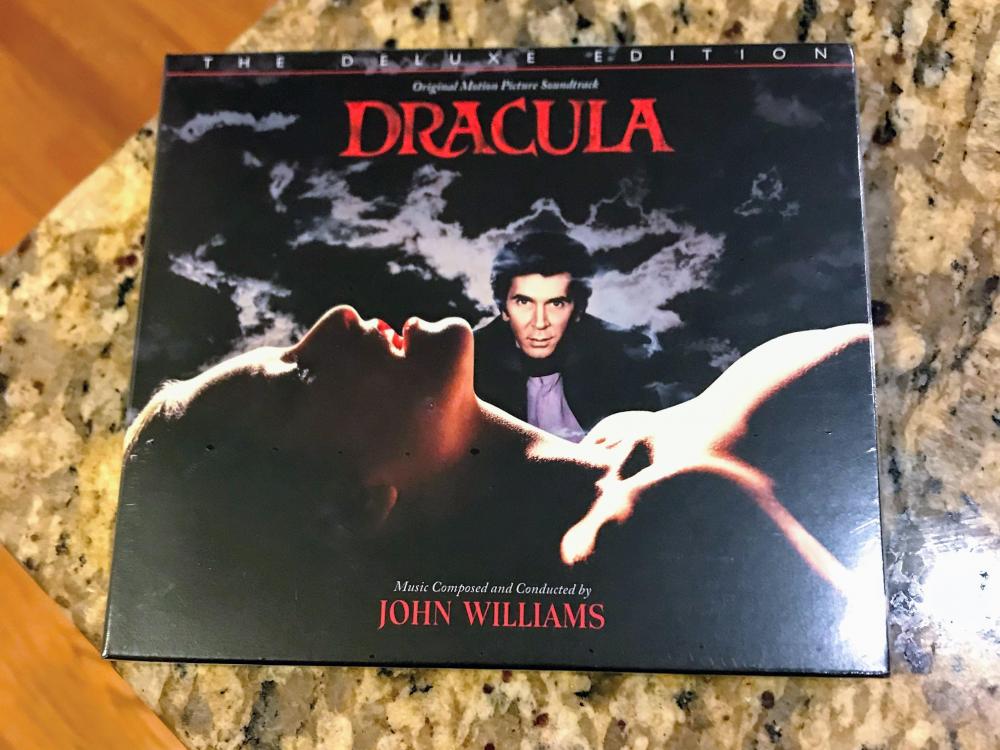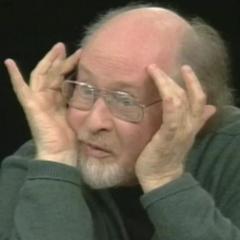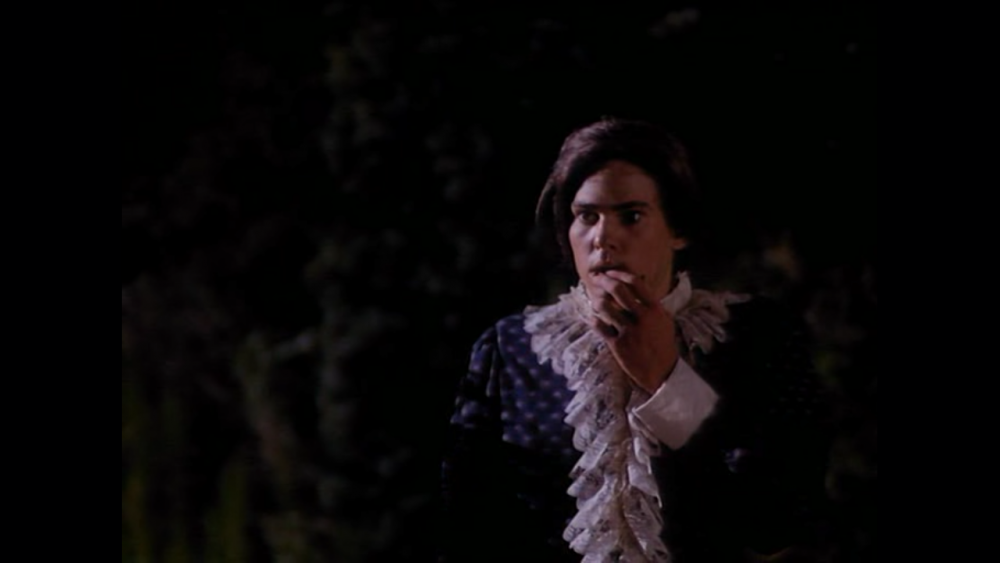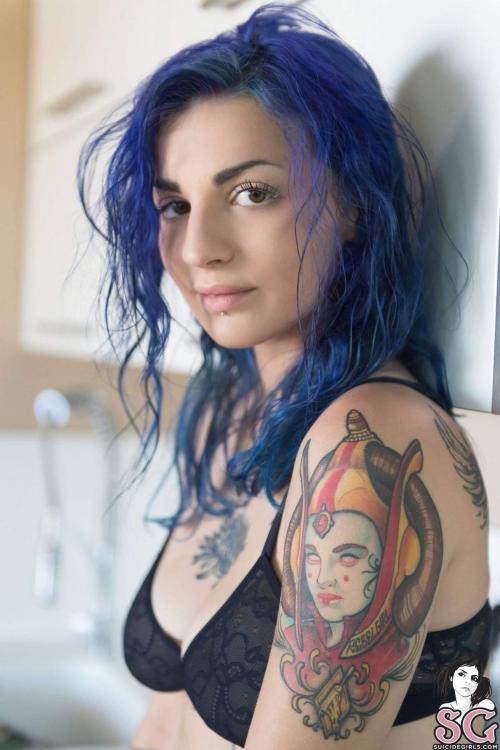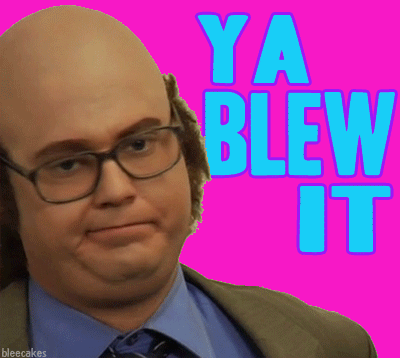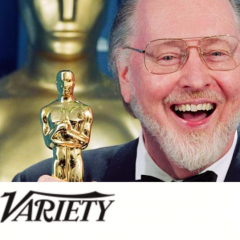Leaderboard
Popular Content
Showing content with the highest reputation on 10/11/18 in all areas
-

DRACULA - 2018 Varese Deluxe Edition Produced by Mike Matessino
Brundlefly and 6 others reacted to publicist for a topic
cf Last Listened thread: Now, Dracula. In tandem with 'The Fury' it is often cited as rare example of Williams doing (operatic) horror (leavened with romance here) and how it's a shame that he didn't do it more often. I disagree, as familiarity breeds contempt (The BFG is the most current example of that) and it's exactly that special status in the maestro's oeuvre that distinguishes both (instinct probably led him back to some of the characteristic traits in Harry Potter's darker corners). The best thing about the new Varése - lavish packaging aside - is the sound: what a relief it is to bid farewell to the awfully pinched sound of the old cd, which now sounds like a proper late 70's Tomlinson recording - thankfully the new mix leaves that sound well enough alone, only sprucing it up discreetly. The old MCA release is familiar enough, so on to the stuff previously missing. While there is still a lot of riffing on Dracula's theme, some interesting things happen with (and beyond) it. 1. Main Title & Storm Sequence (Film Version) 5:19 > the already released storm sequence now with the proper film opening, which gives a more thunderous reading to the second phrase of the Dracula theme, with '25. Main Title & Storm Sequence (Alternate)' featuring the old LP main title but with a shortened 50 second alternate of the rolling deep basses, ending on a sudden shock chord (different film cut?) 2. Meeting in the Cave 3:32 > Dracula 'calls' Mina from a cave after he has been shipwrecked, evocative sequence, same as CD, some orchestral detail heard for the first time here 3. A Quick Change 1:32 > film version of Dracula getting up from his coffin and attacking Renfield (introducing the curved middle part of the main theme as menacing rhythmic figure), Williams swiftly edited this together with two more cues as 'Abduction of Lucy' on the old LP 4. Dracula Appears :56 > belongs to tail end of 'Quick Change' but is interrupted by a cut to Lucy's party in the film, swirling strings illustrate the arrival of Dracula's coach, with one of the best examples of dramatic mickey-mousing ever, when the steps fall out the coach and Williams' hits each with one sinister chord from the orchestra 5. Casting a Spell and The Visitation 4:35 > Mina's 'doomed' theme is introduced when Dracula hypnotizes her, jumping to the long wordless later scene, very well shot, btw, when Dracula crawls the walls to Mina's room to finally claim her. Obviously cut, as the cue is even longer here. 6. Give Me Your Loyalty 1:23 > the old opening of 'Abduction of Lucy' when Dracula secures Renfield's services, with a short bustling tail-end for a glimpse of village life, a rare relief from the oppressive mood of the rest. 7. Jonathan Pays a Call 3:05 > short variation of village life rhythmic figure when Harker goes to visit Dracula's castle, this is more scene-specific illustration music that could be cut. 8. For Mina 2:23 > like old cd 9 . The Dining Room 1:24 > the main love story begins here, with Kate Nelligan's Lucy visiting Dracula's spooky premises for dinner, her entrance into the great candle-lit dining room made into a show piece for product design and Williams presenting some bewitched woodwind variations of Dracula's theme before the... 10. First Kiss 2:08 > things get more urgent here, with Dracula seducing Lucy, Williams giving it a soft ostinato push midway that faintly recalls the final rescue in 'Poseidon Adventure' or 'Seven Years in Tibet' before foreboding darkness takes over. 11. Dracula Meets Van Helsing 2:44 > very well-shot scene of Olivier and Langella meeting at Mina's foggy graveyard site, scoring the count's mysterious allure with Van Helsing not-yet-able to confront his bête noire, though by now it has been established that we are dealing with an intrusion form the netherworld which Williams pinpoints from the human's POV with a sly variation on the old Dies irae chant. 12. Grave Trampling and The Asylum 1:14 > more dramatic variation of the Dies irae when a horse pinpoints a grave with an undead, sounds exciting but could be cut as this material is better dramatized in 'Van Helsing's solution' later on 13. Night Journeys (Film Version) 5:20 > the movie's set piece - it has many but this is Maurice Binder taking over, folks - when Dracula and Lucy finally make love in a montage firestorm of reds and blacks, musically walking in Wagner's footprints (Liebestod from Tristan and Isolde). Intercut with Van Helsing's group trying to find vampires underground, the scene shows Dracula entering Lucy's room and gently taking her. This happens after all elements of the story have been well established, but interestingly Williams scores Dracula's entrance like a first-time occurence, still kind of spooky but less menacing than Mina's taking, a clear sign that he intended the scene to be a stand-alone piece. Watch it with the music off, the decision to score it like that is completely arbitrary but it works! When the montage starts there is a heralding brass call magnificently announcing Lucy's abandon, the ensuing romantic chaos (Dracula's theme twists and turns like a mad eel after the 03.10 mark) resolving in a thundering Wagnerian resolution of the Dracula theme that surely belongs to the 70's most boldest scoring choices. Thus, it was replaced with '26. The Love Scene (Extended Version) 4:40', though leaving the first part of version 1 intact for the movie - Williams wrote a more sweetly romantic opening (clearly citing Wagner) - and replacing the later half with a more straightforward reading of the main theme. 14. Mina Impaled 1:47 > When the undead Mina is found in the mine shaft underneath the asylum, she dies through her father's hands in a rather violent scene which Williams scores with cool 70's staccato piano (the opening of 'Bat Attack') 15. Van Helsing Confronts Dracula 3:16 > more of 'Dracula Meets Van Helsing', not a terribly important cue on its own 16. Van Helsing’s Solution 3:07 > elaboration of the Dies irae material for Mina's flogging and mayhem at the asylum 17. Into the Crypt 2:20 > more spooky graveyard music, cut from the movie - though it is one of the rare instances that refrains from using Dracula's theme, it is not terribly necessary 18. The Attack 1:25 > second part of the old MCA 'Bat Attack', probably best enjoyed in that cut. 19. The Night Visitor 2:17 > rising dramatic cue for pre-vampire Lucy trying to seduce Harker, on the old MCA probably by virtue of being one of the few Dracula-less bits 20. Waiting for Dracula 2:32 > chilly shots of the asylum on the cliffs at dawn with Dracula in wolf-ish form approaching, with a cool watching-and-waiting variation on his theme before... 21. The Capture of Lucy 3:04 > more dramatic urgency after Dracula kills Renfield and breaks through the walls of Lucy's cell, taking her in his arms through the misty woods to escape with the help of a quintessential Williams brass fanfare playing counter to Dracula's theme (again!) 22. To Scarborough (Film Version) 2:48 > another Williams stable, the self-contained scherzo for a coach hunt. This is the MCA version in vastly better sound and a few seconds of overlaid organ chords to punctuate some action shots of Van Helsing and Harker in fast pursuit of Dracula's coach. 23. Dracula’s Death (Extended Version) 4:04 > more elaborate version of the finale on the ship to Varna, with a middle part cut from the MCA album that includes the killing of Van Helsing. In truth, the cut helps the cue as it goes straight to the chase with the rolling basses after 01:31 finishing Dracula off when he is hauled out into the sun and the score desperately fights with him before a broad rising brass gesture closes the chapter. 24. End Titles 3:32 > no big late 70's picture could do without: like so many Williams'ses from this period, this coda is the final say on the main theme with its hands-down best reading, first as plaintive oboe solo as Dracula's coat flaps over the sea, then as full-blown string adagio before quietly dying down on the oboe again. And thus, this adventure long in the making i finally over. And it seemed worth the wait. If you can't stand Dracula's theme, this release still isn't for you...7 points -
Williams' initial cue for the love scene was simply [7M3] The Love Scene, which he decided to put on the OST album in full, but he retitled it to "Night Journeys" (D2T5). Later, he recorded an entire new cue (IE,not just Inserts like usual), called [7M3 Revised] The Love Scene. He ALSO decided to put that on the OST album, where he called it "The Love Scene" (D2T6), though he dropped the first half of the cue there, only releasing the final 2 minutes of it. For the Deluxe Edition, we finally get the whole cue without the beginning missing as "The Love Scene (Extended)" (D1T26). The film itself uses portions of EACH cue for the scene, so that's what "Night Journeys (Film Version)" (D1T13) is. Of special note is that the film does NOT use the choir you can hear in the OST track, and the choir wasn't available on the stereo masters Mike used to rebuild disc 1, so you really want to make sure to listen to the Disc 2 version to hear Williams' full intentions including the choir. The only real confusion comes from Williams' choice to put two version of the same cue on the OST LP. If he hadn't, the bonus track could have been called "Night Journeys (Alternate)". But because the end of this cue was in its own track on the LP the release of the full cue had to be called "The Love Scene (Extended Version)".5 points
-
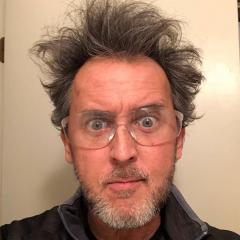
DRACULA - 2018 Varese Deluxe Edition Produced by Mike Matessino
aescalle and 3 others reacted to tranders65 for a topic
4 points -
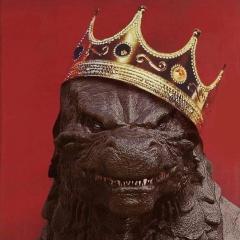
What Is The Last Film You Watched? (Older Films)
Chen G. and 2 others reacted to Unlucky Bastard for a topic
3 points -
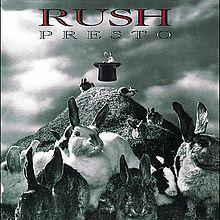
What Is The Last Film You Watched? (Older Films)
Quintus and 2 others reacted to Naïve Old Fart for a topic
What is intrinsically amiss with films made for a young audience? Both PADDINGTON films have very positive things to say about inclusion, overcoming prejudice, loyalty, and healthy family values. I'd rather watch a PADDINGTON film, than any number of these "important", yet vacuous pieces of work that depict the breakup of a marriage, or some loser struggling with drug addiction, or a ne'er-do-well, trying to make it on the outside. I get enough of that self-pitying masturbation, rammed down my throat, every night, on the news. I don't need it. The PADDINGTON films offer a different viewing experience: they lift me up, not bring me down.3 points -
Celebrating Ennio's 90th birthday with: - The Thing - The Good, the Bad and the Ugly - The Untouchables - Il cuore nel pozzo - Giu' la testa - The Mission - The Hateful 83 points
-
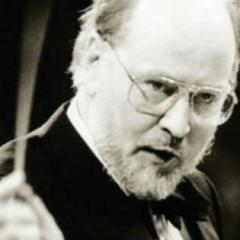
General Harmony/Orchestration/Theory Questions
Dixon Hill and 2 others reacted to Ludwig for a topic
I agree with @Score that Williams treats the harmony at this part of the theme flexibly, offering either bVII or iv with various added notes. It's great that you point us to the other uses in the score itself! They're just further evidence that are mighty useful in trying to figure out what's going on at the start of the concert arrangement. One more thing would add to this productive discussion is that Williams never "fleshes out" the harmony at this spot with a minor iv with an added 4th. In addition, "add4" isn't a standard label, probably because to add a 4th means you've got the 3rd, and having the 3rd and 4th at the same time is avoided in both classical music (having a suspension and its resolution at the same time) and in jazz (an "avoid" note). If the 4th is there, in jazz it's usually placed an octave higher to be an 11th (for minor chords, it would be the perfect 11th, for major chords, the sharp 11). Personally, I don't hear this harmony as jazzy or even Johnny's special brand of jazz-harmony-fused-with-classical-so-it-doesn't-sound-jazzy-anymore. The kind of thing @TGP talks about as one of Williams' great stylistic achievements (which I completely agree with). Anyway, I don't hear it as that, but rather as a straight ahead late-Romantic style adapted into Williams' own style. So speaking again of "familiarity", an add4 interpretation would be lower down my list than an incomplete 7th chord. But as @Score points out, either way the chord (excluding the bass pedal) is perhaps somewhat ambiguous at the start because the chord is incomplete. So one has to draw on either other statements of the theme that are fleshed out more at that spot and extrapolate backwards to the opening, or draw on a familiarity argument, which, depending on one's background, may elicit different interpretations. I suppose for these reasons, I would still go with the bVII interpretation even at the start where the harmony's incomplete. But of course Williams does harmonize it with variants of minor iv as well, as @Score rightfully shows. The concert arrangement even has these as well, once the theme moves into A major at the end. So it's not as if we're supposed to hear the harmony the same way each time that part of the theme appears.3 points -
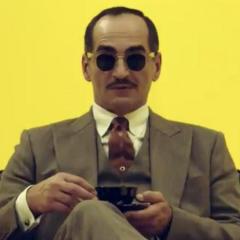
How many minutes (approximately) of unreleased music do these scores have?
The Illustrious Jerry and 2 others reacted to Arpy for a topic
847 minutes approx.3 points -
3 points
-
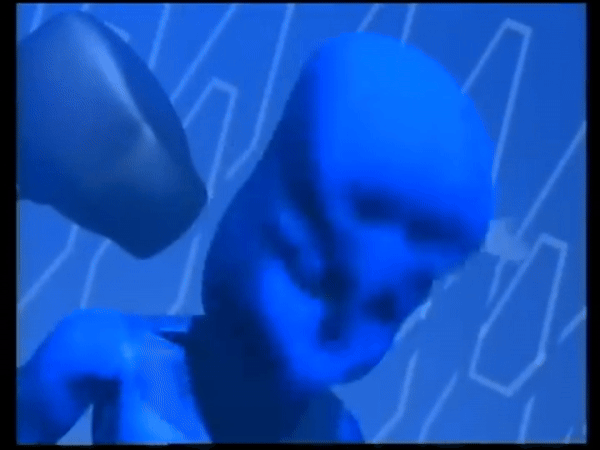
James Newton Howard's FANTASTIC BEASTS: THE CRIMES OF GRINDELWALD
Taikomochi and 2 others reacted to mrbellamy for a topic
One thing I noticed3 points -
OK, I've given this score a few listens by now: I can certainly see where the disappointment is coming from. I LOVE LOVE LOVE "The Thestral Chase," "Dumbledore," and "The Kelpie," but none of the rest of the album quite measures up to those cues imho so the score kind of peters off in enjoyment after a rollicking start. The new themes seem to be played rather sparingly as well. That said, there are of course some utterly sublime moments here. In particular, I still can't get over how utterly exciting this passage is -- largely due to the astoundingly beautiful climax, which appears to hint at Newt's "wonder and awe" theme from the first film: And it's hard not to marvel at JNH's ability to sound downright JW-esque at times in his wind figures and other little traits. That really struck me on first listen. In other words, while this doesn't reach the tremendous heights of the first score, that doesn't stop it from being one of this year's very best in my book. EDIT: Oh, and I take back what I said about none of the later cues measuring up to the beginning ones, because this one kicks some serious ass:2 points
-
Yes Jay told us that it's not always the same takes that where used for the OST edits. That's why Mike Matessino was not able to reconstruct the OST from the complete score elements.2 points
-

Favorite score per year
Mr. Who and one other reacted to Smaug The Iron for a topic
Yes I am. Agreed. I love the first 4 Sällskapsresan films (and scores).2 points -
Ignore Alex and his misery guts one-man army crusade against kids movies and grown ups who enjoy the really good ones. Incidentally, has anyone seen Bridge to Terabithia? I watched it recently with my two, it's such a wonderfully Spielbergian kids movie, with the quality almost to match his greatest successes in the genre.2 points
-

What Is The Last Film You Watched? (Older Films)
Naïve Old Fart and one other reacted to Unlucky Bastard for a topic
Adults are only allowed to watch depressing kitchen sink dramas.2 points -
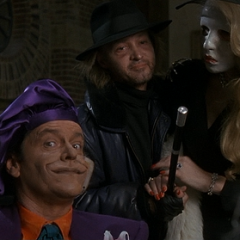
HARRY POTTER 1-3 Complete Score Releases Confirmed
Disco Stu and one other reacted to Gruesome Son of a Bitch for a topic
2 points -

Star Wars Disenchantment
Kasey Kockroach and one other reacted to Gruesome Son of a Bitch for a topic
2 points -
I said "mainstream", so it means a compilation with 34 versions of Gabriel's Oboe. 😁2 points
-
Happy 90th, Maestro Morricone! Karol2 points
-
Now, Dracula. In tandem with 'The Fury' it is often cited as rare example of Williams doing (operatic) horror (leavened with romance here) and how it's a shame that he didn't do it more often. I disagree, as familiarity breeds contempt (The BFG is the most current example of that) and it's exactly that special status in the maestro's oeuvre that distinguishes both (instinct probably led him back to some of the characteristic traits in Harry Potter's darker corners). The best thing about the new Varése - lavish packaging aside - is the sound: what a relief it is to bid farewell to the awfully pinched sound of the old cd, which now sounds like a proper late 70's Tomlinson recording - thankfully the new mix leaves that sound well enough alone, only sprucing it up discreetly. The old MCA release is familiar enough, so on to the stuff previously missing. While there is still a lot of riffing on Dracula's theme, some interesting things happen with (and beyond) it. 1. Main Title & Storm Sequence (Film Version) 5:19 > the already released storm sequence now with the proper film opening, which gives a more thunderous reading to the second phrase of the Dracula theme, with '25. Main Title & Storm Sequence (Alternate)' featuring the old LP main title but with a shortened 50 second alternate of the rolling deep basses, ending on a sudden shock chord (different film cut?) 2. Meeting in the Cave 3:32 > Dracula 'calls' Mina from a cave after he has been shipwrecked, evocative sequence, same as CD, some orchestral detail heard for the first time here 3. A Quick Change 1:32 > film version of Dracula getting up from his coffin and attacking Renfield (introducing the curved middle part of the main theme as menacing rhythmic figure), Williams swiftly edited this together with two more cues as 'Abduction of Lucy' on the old LP 4. Dracula Appears :56 > belongs to tail end of 'Quick Change' but is interrupted by a cut to Lucy's party in the film, swirling strings illustrate the arrival of Dracula's coach, with one of the best examples of dramatic mickey-mousing ever, when the steps fall out the coach and Williams' hits each with one sinister chord from the orchestra 5. Casting a Spell and The Visitation 4:35 > Mina's 'doomed' theme is introduced when Dracula hypnotizes her, jumping to the long wordless later scene, very well shot, btw, when Dracula crawls the walls to Mina's room to finally claim her. Obviously cut, as the cue is even longer here. 6. Give Me Your Loyalty 1:23 > the old opening of 'Abduction of Lucy' when Dracula secures Renfield's services, with a short bustling tail-end for a glimpse of village life, a rare relief from the oppressive mood of the rest. 7. Jonathan Pays a Call 3:05 > short variation of village life rhythmic figure when Harker goes to visit Dracula's castle, this is more scene-specific illustration music that could be cut. 8. For Mina 2:23 > like old cd 9 . The Dining Room 1:24 > the main love story begins here, with Kate Nelligan's Lucy visiting Dracula's spooky premises for dinner, her entrance into the great candle-lit dining room made into a show piece for product design and Williams presenting some bewitched woodwind variations of Dracula's theme before the... 10. First Kiss 2:08 > things get more urgent here, with Dracula seducing Lucy, Williams giving it a soft ostinato push midway that faintly recalls the final rescue in 'Poseidon Adventure' or 'Seven Years in Tibet' before foreboding darkness takes over. 11. Dracula Meets Van Helsing 2:44 > very well-shot scene of Olivier and Langella meeting at Mina's foggy graveyard site, scoring the count's mysterious allure with Van Helsing not-yet-able to confront his bête noire, though by now it has been established that we are dealing with an intrusion form the netherworld which Williams pinpoints from the human's POV with a sly variation on the old Dies irae chant. 12. Grave Trampling and The Asylum 1:14 > more dramatic variation of the Dies irae when a horse pinpoints a grave with an undead, sounds exciting but could be cut as this material is better dramatized in 'Van Helsing's solution' later on 13. Night Journeys (Film Version) 5:20 > the movie's set piece - it has many but this is Maurice Binder taking over, folks - when Dracula and Lucy finally make love in a montage firestorm of reds and blacks, musically walking in Wagner's footprints (Liebestod from Tristan and Isolde). Intercut with Van Helsing's group trying to find vampires underground, the scene shows Dracula entering Lucy's room and gently taking her. This happens after all elements of the story have been well established, but interestingly Williams scores Dracula's entrance like a first-time occurence, still kind of spooky but less menacing than Mina's taking, a clear sign that he intended the scene to be a stand-alone piece. Watch it with the music off, the decision to score it like that is completely arbitrary but it works! When the montage starts there is a heralding brass call magnificently announcing Lucy's abandon, the ensuing romantic chaos (Dracula's theme twists and turns like a mad eel after the 03.10 mark) resolving in a thundering Wagnerian resolution of the Dracula theme that surely belongs to the 70's most boldest scoring choices. Thus, it was replaced with '26. The Love Scene (Extended Version) 4:40', though leaving the first part of version 1 intact for the movie - Williams wrote a more sweetly romantic opening (clearly citing Wagner) - and replacing the later half with a more straightforward reading of the main theme. 14. Mina Impaled 1:47 > When the undead Mina is found in the mine shaft underneath the asylum, she dies through her father's hands in a rather violent scene which Williams scores with cool 70's staccato piano (the opening of 'Bat Attack') 15. Van Helsing Confronts Dracula 3:16 > more of 'Dracula Meets Van Helsing', not a terribly important cue on its own 16. Van Helsing’s Solution 3:07 > elaboration of the Dies irae material for Mina's flogging and mayhem at the asylum 17. Into the Crypt 2:20 > more spooky graveyard music, cut from the movie - though it is one of the rare instances that refrains from using Dracula's theme, it is not terribly necessary 18. The Attack 1:25 > second part of the old MCA 'Bat Attack', probably best enjoyed in that cut. 19. The Night Visitor 2:17 > rising dramatic cue for pre-vampire Lucy trying to seduce Harker, on the old MCA probably by virtue of being one of the few Dracula-less bits 20. Waiting for Dracula 2:32 > chilly shots of the asylum on the cliffs at dawn with Dracula in wolf-ish form approaching, with a cool watching-and-waiting variation on his theme before... 21. The Capture of Lucy 3:04 > more dramatic urgency after Dracula kills Renfield and breaks through the walls of Lucy's cell, taking her in his arms through the misty woods to escape with the help of a quintessential Williams brass fanfare playing counter to Dracula's theme (again!) 22. To Scarborough (Film Version) 2:48 > another Williams stable, the self-contained scherzo for a coach hunt. This is the MCA version in vastly better sound and a few seconds of overlaid organ chords to punctuate some action shots of Van Helsing and Harker in fast pursuit of Dracula's coach. 23. Dracula’s Death (Extended Version) 4:04 > more elaborate version of the finale on the ship to Varna, with a middle part cut from the MCA album that includes the killing of Van Helsing. In truth, the cut helps the cue as it goes straight to the chase with the rolling basses after 01:31 finishing Dracula off when he is hauled out into the sun and the score desperately fights with him before a broad rising brass gesture closes the chapter. 24. End Titles 3:32 > no big late 70's picture could do without: like so many Williams'ses from this period, this coda is the final say on the main theme with its hands-down best reading, first as plaintive oboe solo as Dracula's coat flaps over the sea, then as full-blown string adagio before quietly dying down on the oboe again. And thus, this adventure long in the making i finally over. And it seemed worth the wait. If you can't stand Dracula's theme, this release still isn't for you...2 points
-

What Is The Last Film You Watched? (Older Films)
Naïve Old Fart and one other reacted to Unlucky Bastard for a topic
I liked the bit where Sally Hawkins was under water with him. Reminded me of another movie. No joke, this was an actual scene in the movie.2 points -

What Is The Last Film You Watched? (Older Films)
Naïve Old Fart and one other reacted to Unlucky Bastard for a topic
Paddington 2 This was cute! As good, if not better than the first one.2 points -
So first of all, I see this progression as basically diatonic so I would rewrite it in its proper enharmonic form: however I think it's easier to analyze in C# major: which sounds like this: https://picosong.com/wX9m7 Now, personally, when I listen to this excerpt, what I feel as the "base harmony" is this (pay attention to the second bar for all the following exhibits): i.e. the Gb minor (or F# minor) which @Score alludes to. This sounds like this: https://picosong.com/wX9u5 So what about the B in the original piece? What does it mean? I think that it could be understood as a "compressed" suspension, i.e. a compressed version of this... ...which sounds like this: https://picosong.com/wX9uQ... (note: I removed the anticipatory E# in measure 2 so you can hear the LH clearer). ...but without the upper C#: which sounds like this: https://picosong.com/wX9J4/ I think that this "sound" is, on average, more familiar to people here - all that Williams does is join the A and B together (compare this audio with the first audio excerpt). Note, I'm not saying that this is how Williams got to the B in the first place (with an A and B separated apart), but it is one way of thinking of the meaning of those two notes. Now, I guess the deeper question I ask myself is, why did Williams join the A and B together? I think there are different angles from which you can wrestle with this, but the best way is to realise the slowness of the change in accompaniment. @filmmusic 's post makes this really obvious: the accompaniment never changes quicker than every bar - it only goes faster at bar 17. So perhaps one can say that, Williams set off from the start to have a very static accompaniment. This, of course, is the "gimmick" of the piece - it starts very static and slowly gains movement until it reaches a climax, then calms down again, A.K.A. How To Write Romantic Film Music 101. Now, slow, static chords are rife for opportunity with so-called colour tones, which in this case may be the B - but I think in this case, one may understand the presence of the B easier by looking at the last exhibit above and seeing the B and A as a suspension "glued together". This is at least how I understand it. Lehman's Cb7/Db is interesting but ultimately I don't think it explains much. If you were to order the pitches in ascending order, you would get A B(Cb) C#(Db) F#. The Cb has a note a tone apart on either side - this just makes it an unlikely tone to treat as the tonic, IMO, and an unhelpful one. I more side with @Score's interpretation, that it is something like a Gb minor chord (iv), but with an added B(Cb), which I interpret as a "ghost" of a suspension. (I don't know what those two pictures are doing down there, I can't get rid of them... 😳 )2 points
-

James Newton Howard's FANTASTIC BEASTS: THE CRIMES OF GRINDELWALD
leeallen01 and one other reacted to mrbellamy for a topic
I don't agree that the new themes are much to scream about as represented here. Would have liked more of Dumbledore's, but again that might be a limitation of the film. The "ominous choral" motif as you pinpointed is the main new idea that stood out, actually, which I found effective but didn't quite feel like it tied the soundtrack together on a musical level. But I hope it and the other new stuff makes some sort of dramatic sense. I think one thing about the first score is that along with the lengthier tracks for JNH to show off and isolated bursts of brand new melodic energy like "The Erumpent" which this lacks, it had that extra "1920s jazz" element to distinguish itself as something interesting apart from the previous 8 Potter scores. It worked stylistically and dramatically and that was something I really enjoyed that made it a little more than "just" a solid fantasy score. It was a fun musical hook I felt this series could claim, the "Newt Scamander Goes to..." concept. But only "Newt and Tina Pack for Paris" really has anything like that and since it's such a clear highlight, I would have liked to hear more of him in that style, riffing around with old and new themes. So will just have to see the film to see if maybe there's some unreleased stuff in that vein, or if JNH missed some opportunities, or if the film just doesn't really allow for it much. As it is, first few tracks and last few tracks stand out, the piano solos are nice, and the scattered new renditions of the first film's themes are quite good.2 points -
TL;DR: 1-13 Night Journeys (Film Version) 5:20 = portions of the Original and the Revised (no choir) 1-26 The Love Scene (Extended Version) 4:40 = the Revised 2-5 Night Journeys 5:12 = the Original (with choir) 2-6 The Love Scene 2:09 = the ENDING ONLY of the Revised2 points
-
Across the Stars:2 points
-

The Official La-La Land Records Thread
Yavar Moradi reacted to bollemanneke for a topic
Seriously? Why? I want to speculate!1 point -
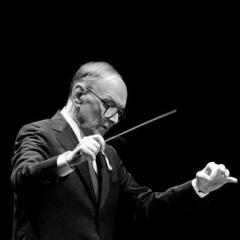
What Is The Last Film You Watched? (Older Films)
Not Mr. Big reacted to Koray Savas for a topic
I watched The Princess Bride last night but fell asleep towards the end.1 point -
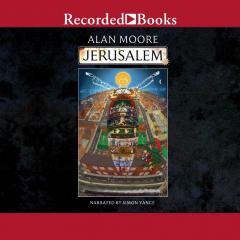
What Is The Last Film You Watched? (Older Films)
Naïve Old Fart reacted to #SnowyVernalSpringsEternal for a topic
Feeding the infantility of the world!1 point -
Glad to see someone else recognize the quality of the Netflix film UPGRADE (my 14th place). See, we CAN agree on something once in a while, Alex. I also thought SICARIO 2 was a good movie (27th place) and I thought HEREDITARY was OK -- but not quite the thing it was made out to be (46th place).1 point
-
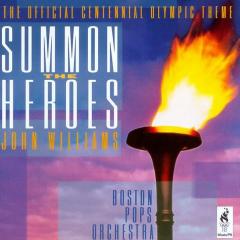
The reply with a movie quote story game.
Naïve Old Fart reacted to Matt S. for a topic
You have to shoot. If you are logical, you have to shoot.1 point -

What Is The Last Film You Watched? (Older Films)
Unlucky Bastard reacted to Gruesome Son of a Bitch for a topic
Psycho IV: The Beginning This movie was filmed across from the E.T. ride at Universal Studios Florida and you can just sort of feel its presence offscreen as a legend is born with a strapping Henry Thomas as young Norman in exquisite denim murdering whores. This is a weird one. The worst thing I can say about it is it feels a bit incomplete. It cuts between old Norman absurdly out of place in a (then) modern home preparing an elaborate dinner, the radio station talk show host and flashbacks to young manhood with Olivia Hussey constantly freaking out. There's a satisfaction to Mother's death. It really does feel she's earned it for being such a monstrous broadzilla. But the real climax of the movie turns out to be circa 1990 Norman chasing his wife around the old house and reconciling. Did anyone really care about that? The movie suddenly ends at the 90 minute mark and feels like it's missing something. Several good kills including one whore that just won't seem to die, the most disturbing in the series. Henry Thomas is perfect. Mother lacks the depth of the TV show version, but the role didn't really call for that. Now...show's over.1 point -
1 point
-
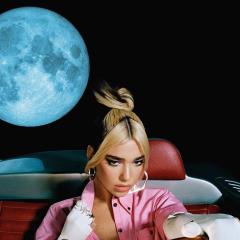
HARRY POTTER 1-3 Complete Score Releases Confirmed
1977 reacted to Richard Penna for a topic
If that's the case then we're all setting ourselves up for a very big disappointment.1 point -
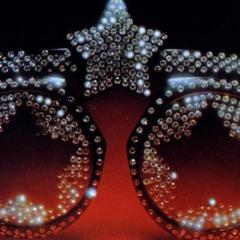
Soundtracks, Compilations, or other recently purchased Music
1977 reacted to Nick Parker for a topic
I know you're being somewhat facetious, but I will say that overall I prefer the Concord presentations to the OSTs with the exception of Raiders of the Lost Ark: get Bad Dates offa there! I know I bring it up all the time, but it's my number one go-to example of "Do you want a score release to be complete and chronological 'cause you want to listen to every cue in the score, or do you just want to say the release is complete?"1 point -

Soundtracks, Compilations, or other recently purchased Music
Kasey Kockroach reacted to Arpy for a topic
1 point -
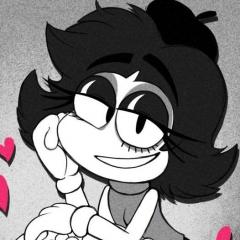
James Newton Howard's FANTASTIC BEASTS: THE CRIMES OF GRINDELWALD
crocodile reacted to Kasey Kockroach for a topic
Too serious for my taste.1 point -
So anybody can post a pic of their set once it arrives? Very much appreciated. 😊1 point
-
What's HS&TP? While I thoroughly enjoyed the music from TLJ, I don't think Johnson was the best director to "push" Williams out of his comfort zone and challenge him. I remember some were expecting a POA type of situation. I think it was definitely a mistake for Johnston to temp the entire movie with Williams own music. It seems like he was just tempting him to imitate his own work.1 point
-
Update from Mike Matessino: http://filmscoremonthly.com/board/posts.cfm?threadID=132079&forumID=1&archive=01 point
-

What Is The Last Film You Watched? (Older Films)
Kasey Kockroach reacted to publicist for a topic
'Harry & Tonto' probably was the best one. The Matthau thing isn't really a good movie (the script has great ingredients but throws them all away for sitcom-style vignettes) but it's one of those were the sheer professionalism and dedication of the actors sells it. Not possible today, you'd need a Harry Potter movie for so many royal character actors playing off each other.1 point -
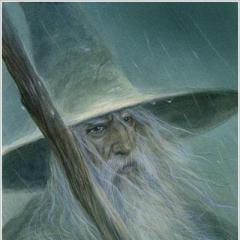
John Williams officially confirmed for Star Wars, Episode IX!
DarthDementous reacted to Incanus for a topic
I would love to have an expanded new march development for Kylo Ren's theme in the final film as he is now the main villain and in control of the New Order. We got a small glimpse of that at the end of TLJ but Williams should do a full blown version for Episode IX.1 point -
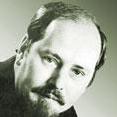
The Composer's Thread
The Illustrious Jerry reacted to Loert for a topic
Here's my most recent composition for orchestra, which I've been working on and off on for the last couple of months: I was going for quite a lyrical, "comfortable" style, very much influenced by the film music greats. It's also by far the longest composition I've ever done. Any comments and feedback would be much appreciated.1 point

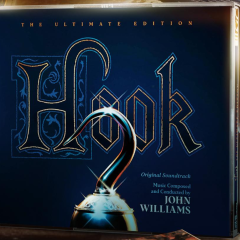
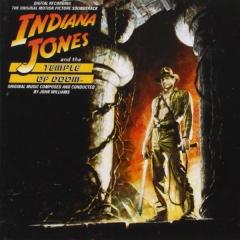
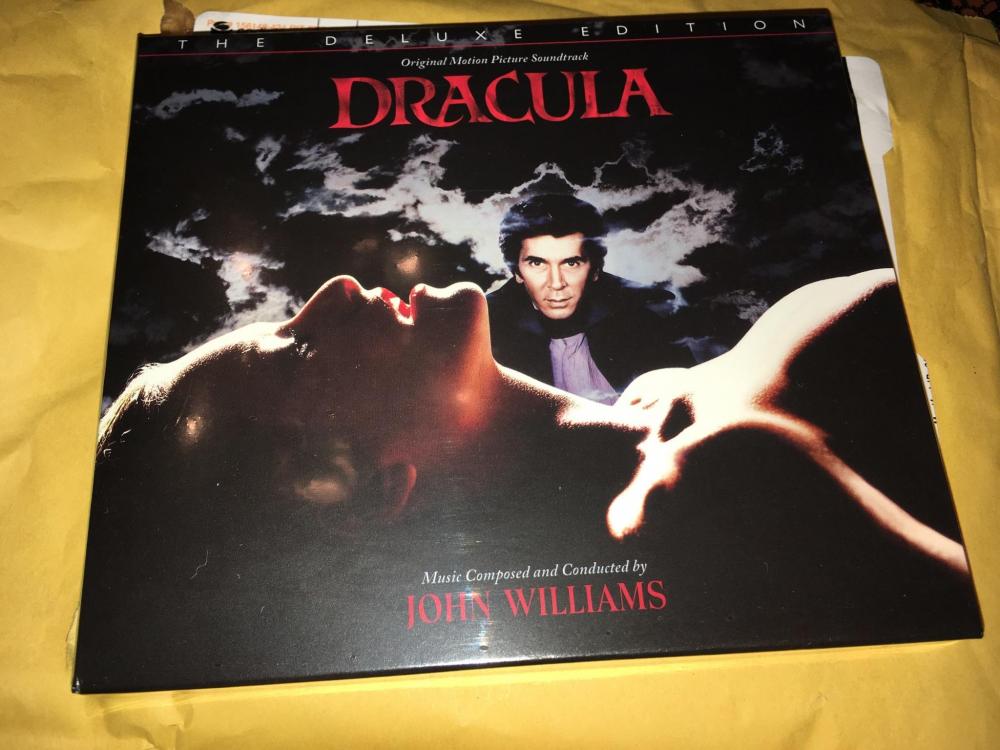
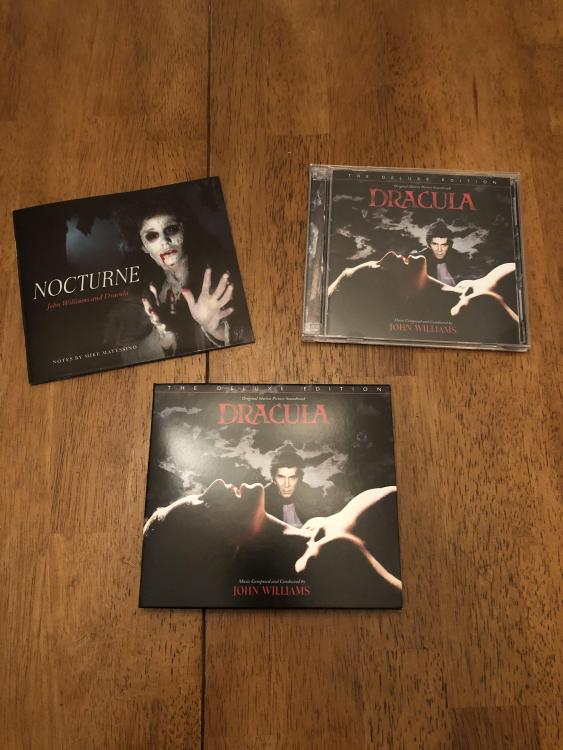

.gif.57cf7f2294bfbbcd6e5b2418fcf8538f.gif)
